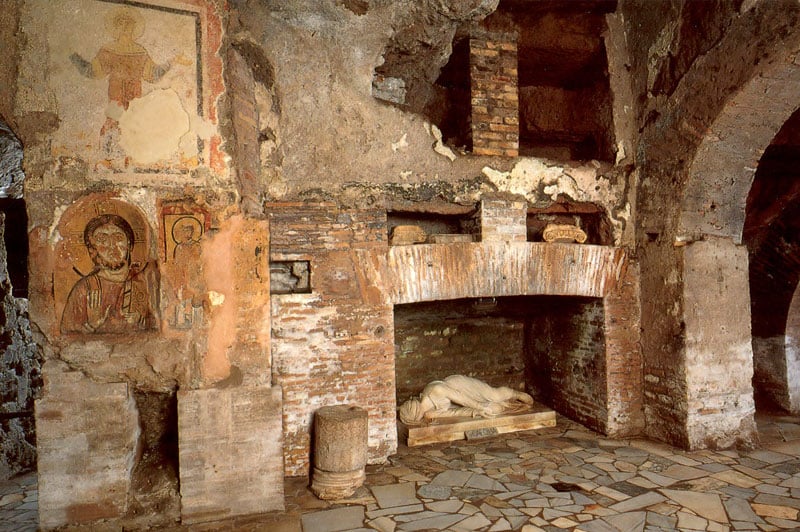

If you decide to live and study abroad in Rome, you’ll find yourself surrounded by some of the most fascinating historical sites in the world – both above ground and below! You might spend an afternoon at the Colosseum, tour the Vatican over a weekend, or visit the Trevi Fountain in between study sessions. And when you’re in the mood for a spooky adventure, you might travel down below into the world-famous catacombs of Rome.
Read on to discover the story behind these underground cemeteries, which cover hundreds of kilometers under the city.
The Anatomy of a Catacomb
The first catacombs were created sometime around the first or second century A.D. They stretched out for kilometers, and went as far as five levels deep.
These catacombs were built by Jews and Christians, who wanted to keep the bodies of their dead intact instead of cremating them. But for these marginalized religious groups, finding land to bury their dead was a tricky business. Roman law decreed that burials couldn’t be done within city walls, and because Christians and Jews tended to be slaves or from poorer classes, buying land was next to impossible.
Fortunately, the soft volcanic rock below ground was easy to dig out, and a handful of wealthy Christians were able to donate some of their own land as burial sites. To make the most out of this land, over 40 catacombs were dug into the rock and filled with the bodies of martyrs, saints, religious leaders, and their followers.
The Catacombs of Domitilla
Because Christians wanted to be buried close to their beloved martyrs and saints, the Roman catacombs tended to cluster around the graves of these key figures, and were often named after their famous occupants.
The Catacombs of Domitilla – named after Saint Domitilla – are among the oldest catacombs in Rome. They’re also the only ones to include an underground basilica, as well as a second century fresco of the Last Supper.
The Catacombs of San Sebastiano
Even after Christianity was legalized in 313 A.D., Christians continued to bury their dead in catacombs. But over time, they began to choose above-ground cemeteries instead, until the catacombs were completely forgotten about for almost a thousand years – all of them that is, except San Sebastiano.

San Sebastiano’s tomb continued to attract visitors throughout the Middle Ages. As a result of the constant flow of foot-traffic, the entire first floor has been worn beyond repair. Fortunately for students who study art history in Italy, not all of the art in these catacombs has been destroyed: students can still see surviving stucco work and frescoes on the second level.
The Catacomb of Callixtus
The famous Crypt of the Popes in the Catacomb of Callixtus makes this site one of the top ones to see when studying in Rome. A long time ago, the catacomb housed the bodies of as many as 500,000 people, including fifty martyrs and sixteen popes – with nine of the popes stored in the Crypt.
For centuries, this vast 20-km, five-level catacomb sat forgotten beneath the streets of Rome until it was rediscovered by the pioneering Italian archaeologist Giovanni Battista de Rossi in 1854.
Which catacombs are top on your list to visit when you study abroad in Italy?




